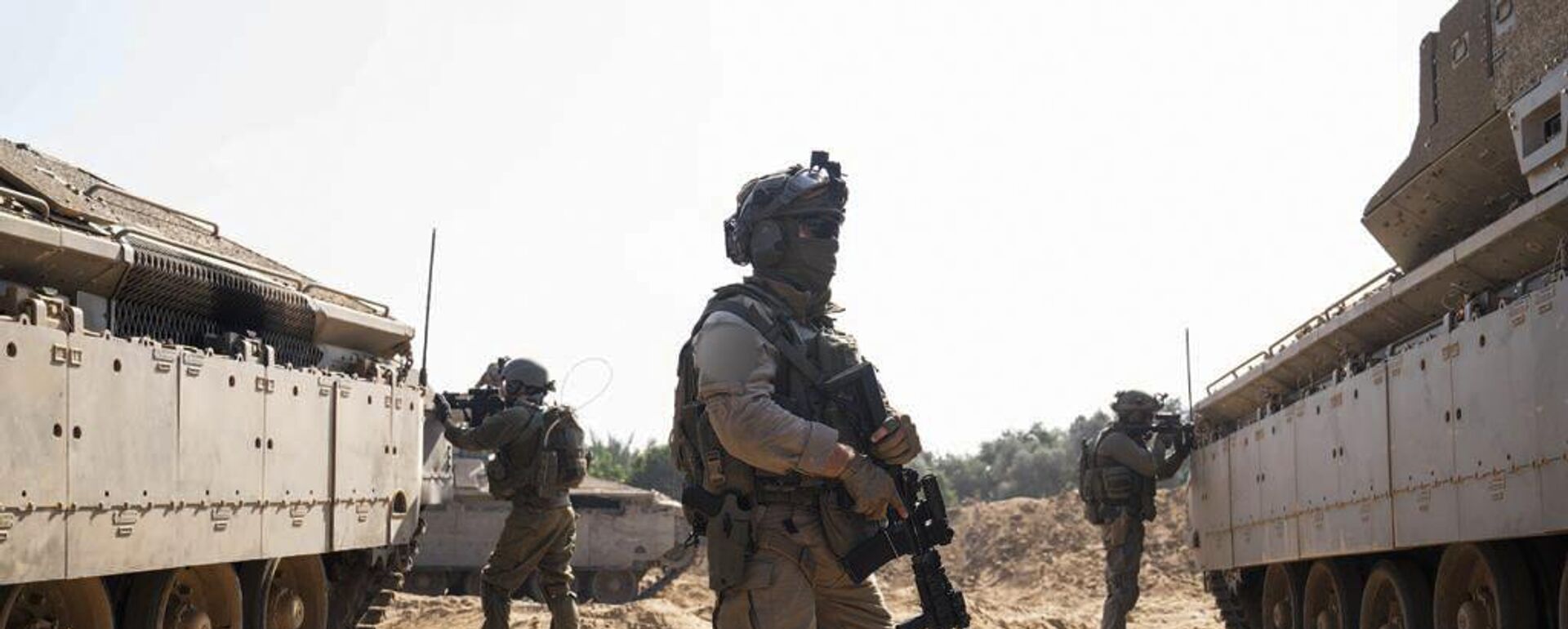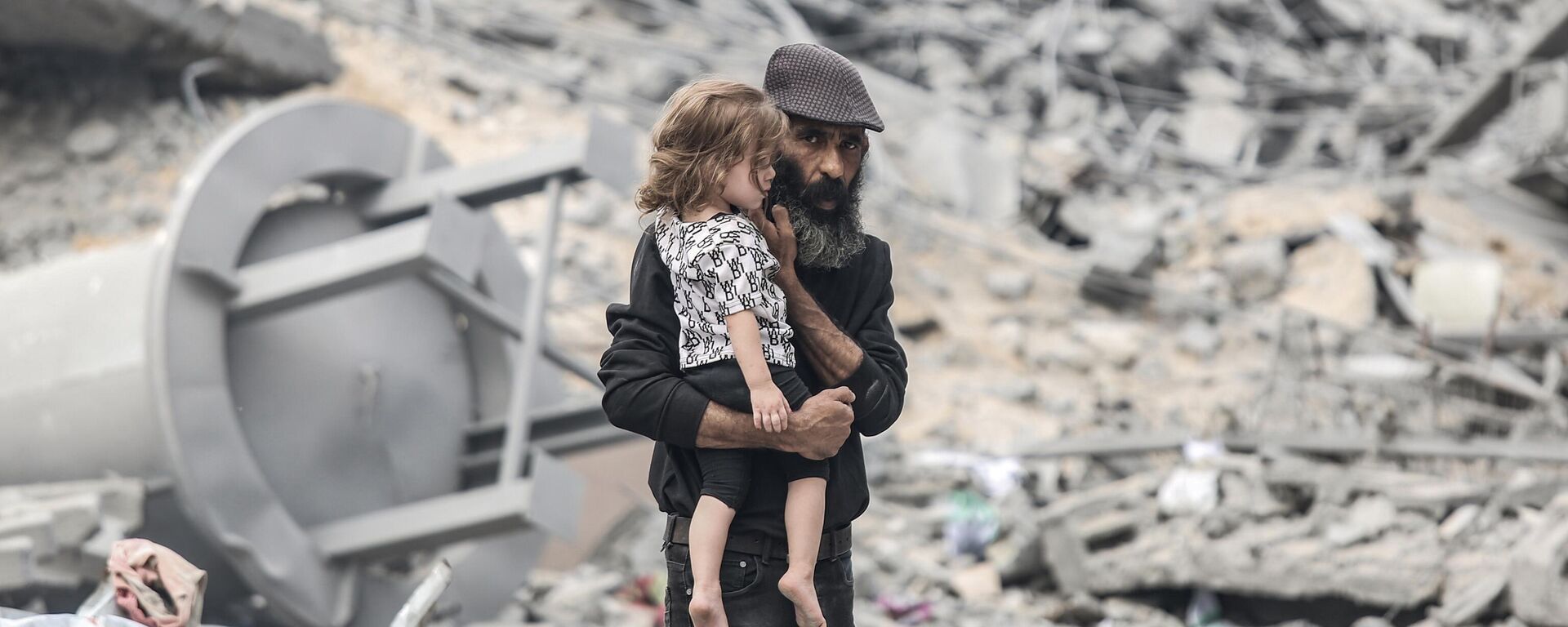Cruise Missile Sub Deployment Aims to Shield US 'Achilles Heel' of Bases Surrounding Iran
19:22 GMT 07.11.2023 (Updated: 19:28 GMT 07.11.2023)

© Photo : X / @CENTCOM
Subscribe
Washington upped the ante in the Palestinian-Israeli crisis on Sunday by announcing the deployment of an Ohio-class guided missile sub to the Middle East to drive home a “message of deterrence.” The sub really is there to deter – deter Iran from launching strikes on US bases across the region that is, former DoD analyst Michael Maloof told Sputnik.
CENTCOM’s public affairs department released a jargon-filled statement on the arrival of a Tomahawk cruise missile-armed Ohio-class guided missile sub in the Middle East on Monday, saying the deployment was designed to “demonstrat[e] the flexibility and dynamic ability to deter potential adversaries, reassure partners, enhance maritime security, and ensure freedom of navigation and the free flow of commerce.”
“US Naval Forces Central Command is responsible for approximately 2.5 million square miles of area including the Arabian Gulf,* the Gulf of Oman, Northern Arabian Sea, Gulf of Aden, and the Red Sea. The US Naval Forces Central Command’s mission is to conduct maritime security operations, theater security cooperation efforts, and strengthen partner nations’ maritime capabilities to promote security and stability in the US 5th Fleet area of operations,” CENTCOM added.
The combatant command did not elaborate on which “potential adversaries” it was referring to, or how the sub’s presence would “ensure freedom of navigation and the free flow of commerce” in a situation where all of the forces Washington’s Israeli allies have engaged thus far have been non-state actors (Hamas, Hezbollah, the Houthis) with no naval capabilities whatsoever, not counting IDF attacks on Syria.
The real “potential adversary” is clearly Iran, says Michael Maloof, a former senior security policy analyst at the Office of the Secretary of Defense.
CENTCOM’s decision to announce the deployment of the sub publicly was “a little unusual,” Maloof told Sputnik, given the fact that US missile subs are arguably “the strongest leg” of the US nuclear triad owing to their ability to elude the watchful eye of potential enemies by traveling underwater, where their detection is next to impossible.
“I think it was meant to send a message. There’s messaging going on everywhere to try and prevent a further escalation on all fronts, whether it’s between Hezbollah and Israel, but also with Iran, and most certainly any increase in belligerence between militias in Iraq and US troops in Iraq and Syria. They have missiles onboard this submarine that are fully capable of ‘reaching out and touching someone’ anywhere in that region,” the observer said.
Not ruling out that the Ohio-class boat may be just one of several subs stealthily deployed to the region alongside the two US carrier strike groups that were sent last month, Maloof suggested that perhaps more than anything, the sub deployment is meant “to protect the 35 bases the US has surrounding Iran.”
“Someone once joked, ‘who put Iran in the middle of all our bases’. It’s that silly, and it’s meant as a deterrent on the one hand but on the other hand it provides an Achilles heel, really, because [the bases expose] US forces to counterattack if necessary. And I’m sure that all of them are targeted by Iran in the event that this thing escalates,” Maloof stressed.
“Time is of the essence” and running out to resolve the Mideast crisis, the observer believes, pointing out that it “easily” threatens to “mushroom into something much greater very quickly,” even if most countries in the region don’t actually want a full-scale war.
“This is something that we saw coming months and months ago. Now it’s here and no one’s prepared. That’s why there’s still questions of what to do with Gaza after all of this is over. Clearly it requires a political settlement,” Maloof said, pointing out that questions have again reemerged about whether Israeli Prime Minister Benjamin Netanyahu will survive the current crisis. “Before Hamas took action, Israel was on the verge of a civil war because of its own internal political strife. I think there’s so many variables going on in that region. And anything can tilt it at any moment,” Maloof said.
Ultimately, the observer believes “some kind of permanent settlement” is a must in the Palestinian-Israeli crisis instead of “kicking this proverbial can down the road year after year after year.” Even for Israel, attempting to simply wipe Hamas out is not realistic, since the militant group, or someone like them or perhaps even more radical, could spring up again in the absence of a permanent peace, Maloof summed up.
* Referred to by the vast majority of countries in the world as the Persian Gulf.



